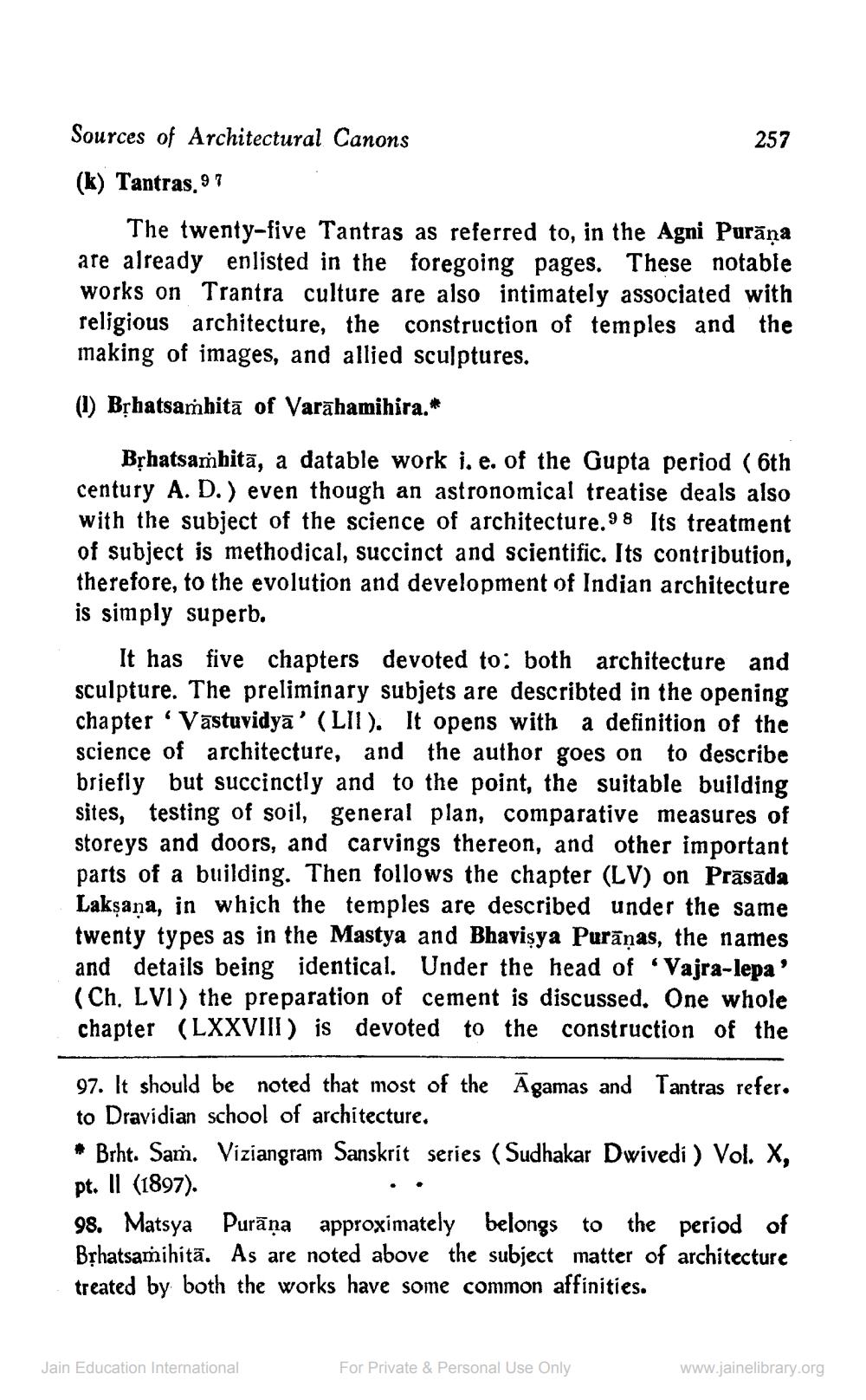________________
257
Sources of Architectural Canons (k) Tantras. 97
The twenty-five Tantras as referred to, in the Agni Purāņa are already enlisted in the foregoing pages. These notable works on Trantra culture are also intimately associated with religious architecture, the construction of temples and the making of images, and allied sculptures.
(1) Bịhatsamhitā of Varāhamihira. *
Bșhatsambitā, a datable work i. e. of the Gupta period (6th century A. D.) even though an astronomical treatise deals also with the subject of the science of architecture.98 Its treatment of subject is methodical, succinct and scientific. Its contribution, therefore, to the evolution and development of Indian architecture is simply superb.
It has five chapters devoted to: both architecture and sculpture. The preliminary subjets are describted in the opening chapter · Vastuvidyā' (LII). It opens with a definition of the science of architecture, and the author goes on to describe briefly but succinctly and to the point, the suitable building sites, testing of soil, general plan, comparative measures of storeys and doors, and carvings thereon, and other important parts of a bujlding. Then follows the chapter (LV) on Prāsāda Lakşaņa, in which the temples are described under the same twenty types as in the Mastya and Bhavisya Purāņas, the names and details being identical. Under the head of Vajra-lepa' (Ch. LVI) the preparation of cement is discussed. One whole chapter (LXXVIII) is devoted to the construction of the
97. It should be noted that most of the Āgamas and Tantras refer. to Dravidian school of architecture, * Brht. Saṁ. Viziangram Sanskrit series (Sudhakar Dwivedi) Vol. X, pt. II (1897). 98. Matsya Purāņa approximately belongs to the period of Bịhatsamihitä. As are noted above the subject matter of architecture treated by both the works have some common affinities.
Jain Education International
For Private & Personal Use Only
www.jainelibrary.org




